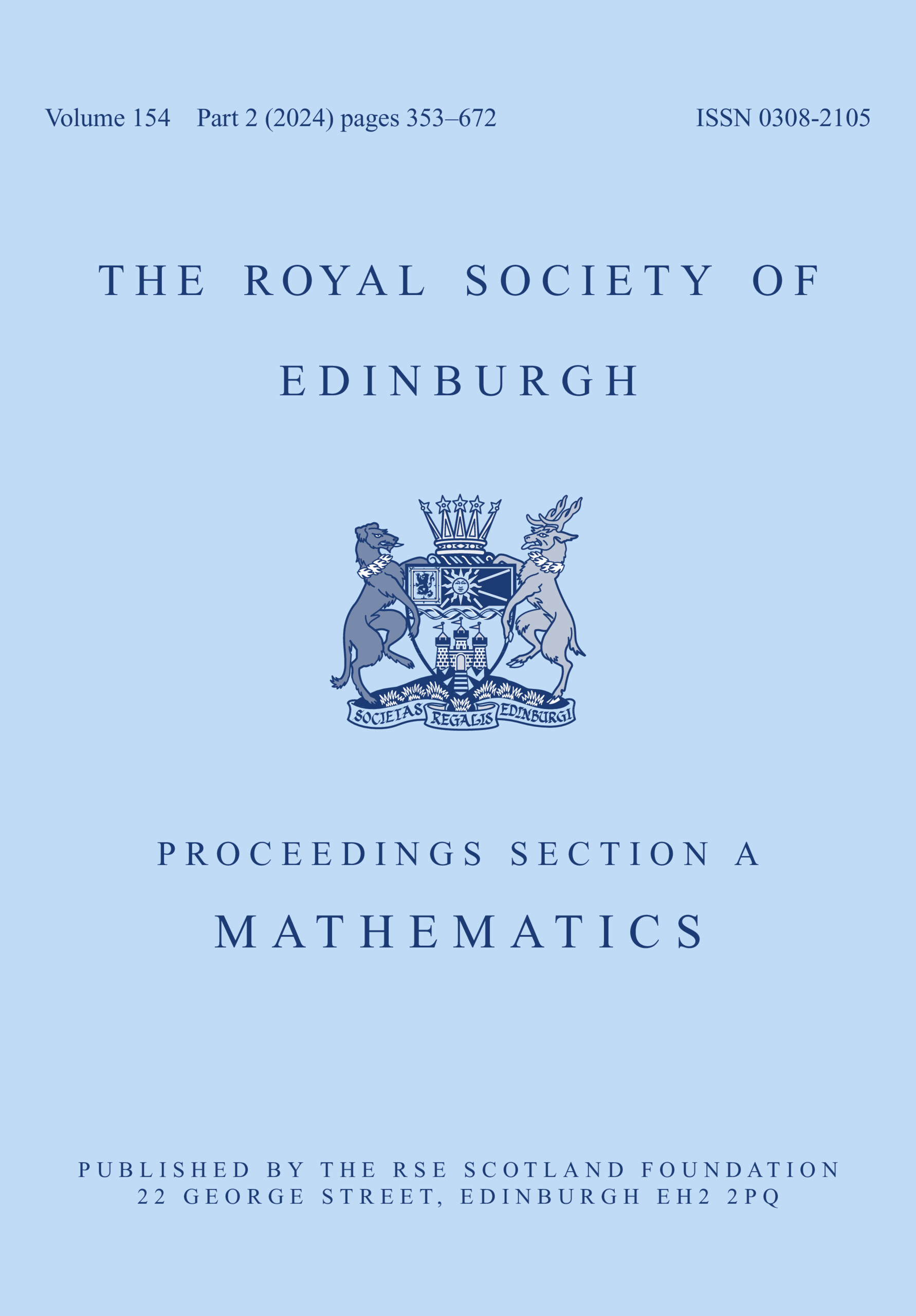Article contents
Asymptotic behaviour as p → ∞ of least energy solutions of a (p, q(p))-Laplacian problem
Published online by Cambridge University Press: 17 January 2019
Abstract
We study the asymptotic behaviour, as p → ∞, of the least energy solutions of the problem
 $$\left\{ {\matrix{ {-(\Delta _p + \Delta _{q(p)})u = \lambda _p \vert u(x_u) \vert ^{p-2}u(x_u)\delta _{x_u}} & {{\rm in}} & \Omega \cr {u = 0} \hfill \hfill \hfill & {{\rm on}} & {\partial \Omega ,} \cr } } \right.$$
$$\left\{ {\matrix{ {-(\Delta _p + \Delta _{q(p)})u = \lambda _p \vert u(x_u) \vert ^{p-2}u(x_u)\delta _{x_u}} & {{\rm in}} & \Omega \cr {u = 0} \hfill \hfill \hfill & {{\rm on}} & {\partial \Omega ,} \cr } } \right.$$ $\delta _{x_{u}}$ is the Dirac delta distribution supported at xu,
$\delta _{x_{u}}$ is the Dirac delta distribution supported at xu,
 $$\mathop {\lim }\limits_{p\to \infty } \displaystyle{{q(p)} \over p} = Q\in \left\{ {\matrix{ {(0,1)} & {{\rm if}} & {N < q(p) < p} \cr {(1,\infty )} & {{\rm if}} & {N < p < q(p)} \cr } } \right.$$
$$\mathop {\lim }\limits_{p\to \infty } \displaystyle{{q(p)} \over p} = Q\in \left\{ {\matrix{ {(0,1)} & {{\rm if}} & {N < q(p) < p} \cr {(1,\infty )} & {{\rm if}} & {N < p < q(p)} \cr } } \right.$$ $$\min \left\{ {\displaystyle{{{\rm \Vert }\nabla u{\rm \Vert }_\infty } \over {{\rm \Vert }u{\rm \Vert }_\infty }}:0 \ne u\in W^{1,\infty }(\Omega )\cap C_0(\bar{\Omega })} \right\} \les \mathop {\lim }\limits_{p\to \infty } (\lambda _p)^{1/p} < \infty .$$
$$\min \left\{ {\displaystyle{{{\rm \Vert }\nabla u{\rm \Vert }_\infty } \over {{\rm \Vert }u{\rm \Vert }_\infty }}:0 \ne u\in W^{1,\infty }(\Omega )\cap C_0(\bar{\Omega })} \right\} \les \mathop {\lim }\limits_{p\to \infty } (\lambda _p)^{1/p} < \infty .$$
MSC classification
- Type
- Research Article
- Information
- Proceedings of the Royal Society of Edinburgh Section A: Mathematics , Volume 149 , Issue 6 , December 2019 , pp. 1493 - 1522
- Copyright
- Copyright © Royal Society of Edinburgh 2019
References
- 3
- Cited by


